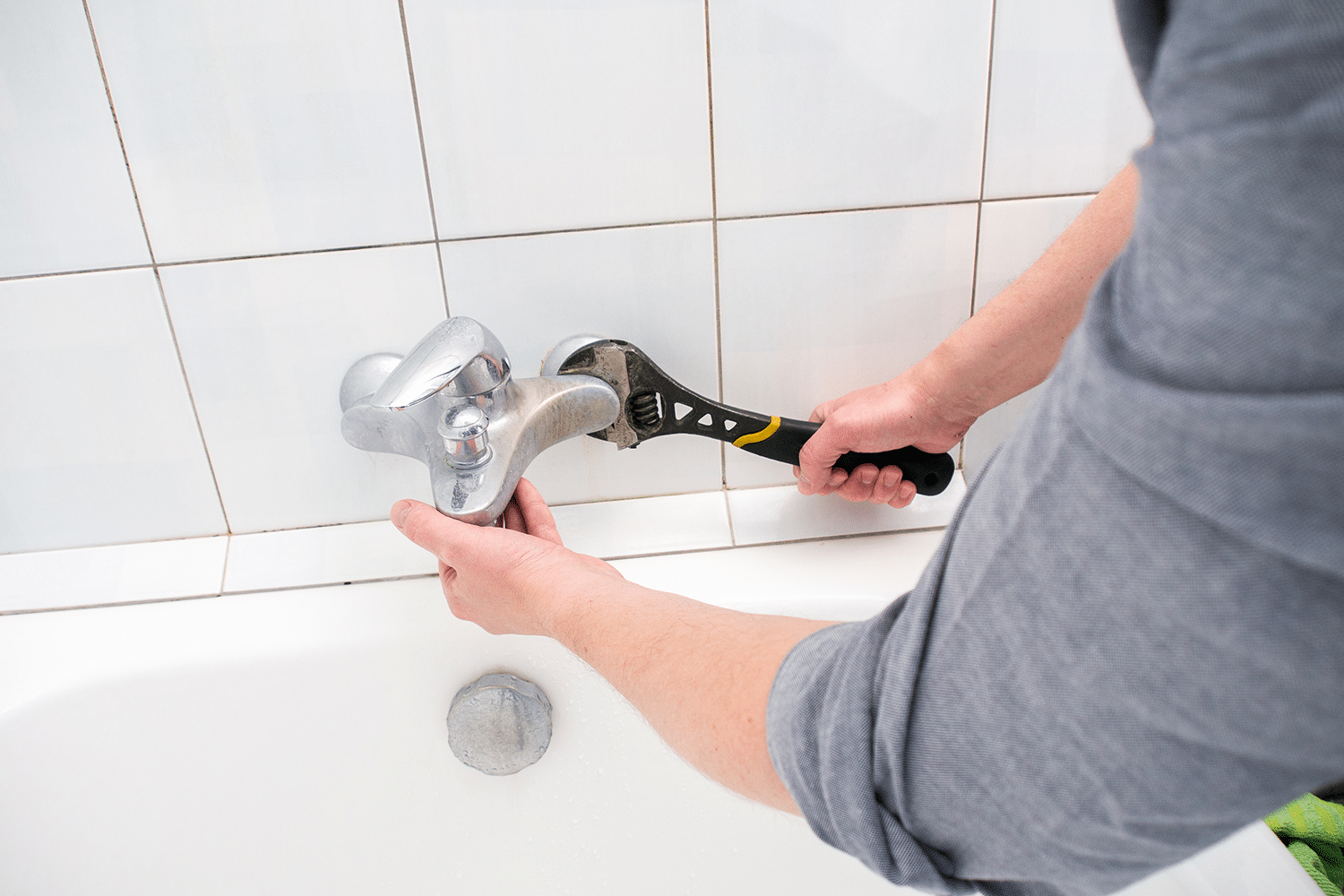How do you feel with regards to How to Fix a Dripping or Leaky Faucet ?

Dripping faucets may feel like a small inconvenience, but their effect exceeds simply the aggravation of the audio. From wasting water to incurring unneeded monetary expenses and wellness threats, ignoring a trickling tap can cause various consequences. In this article, we'll explore why it's crucial to address this common home problem without delay and effectively.
Waste of Water
Ecological Impact
Dripping faucets contribute considerably to water wastefulness. According to the Environmental Protection Agency (EPA), a solitary tap leaking at one drip per second can squander more than 3,000 gallons of water per year. This not only stress water resources but also impacts environments and wild animals based on them.
Financial Costs
Increased Water Bills
Past the ecological effect, dripping faucets can blow up water expenses significantly. The accumulated wastage with time converts into higher energy expenses, which can have been stayed clear of with prompt repairs.
Possible Property Damage
Moreover, long term leaking can result in harm to components and surfaces bordering the tap. Water accumulation can create staining, corrosion, and also architectural problems if left unattended, causing additional fixing expenses.
Health Problems
Mold and Mold Growth
The consistent existence of dampness from a dripping tap creates a suitable environment for mold and mildew and mildew development. These fungi not just compromise indoor air top quality however additionally pose wellness dangers, particularly for people with respiratory conditions or allergic reactions.
Waterborne Illness
Stationary water in dripping taps can come to be a breeding ground for microorganisms and various other pathogens, raising the risk of waterborne conditions. Contaminants such as Legionella germs grow in stagnant water, potentially bring about major health problems when consumed or inhaled.
DIY vs. Specialist Repair
Benefits and drawbacks of DIY Repair Work
While some might try to fix a leaking tap themselves, do it yourself repairs come with their own set of difficulties. Without appropriate expertise and devices, DIY attempts can intensify the problem or bring about insufficient repairs, extending the issue.
Advantages of Employing a Specialist Plumber
Working with a professional plumber ensures that the underlying reason for the leaking tap is attended to properly. Plumbers possess the knowledge and devices to identify and fix tap concerns efficiently, conserving time and minimizing the risk of further damage.
Step-by-Step Overview to Fixing a Dripping Tap
Devices Called for
Prior to trying to take care of a leaking tap, gather the necessary devices, consisting of a flexible wrench, screwdrivers, substitute parts (such as washers or cartridges), and plumber's tape.
Usual Faucet Issues and Their Solutions
Recognize the kind of tap and the details concern triggering the drip. Common troubles consist of damaged washers, corroded shutoff seats, or defective O-rings. Refer to supplier guidelines or on the internet tutorials for detailed support on repair work.
Safety nets
Regular Upkeep Tips
To stop leaking faucets, perform regular upkeep such as cleaning aerators, examining for leakages, and changing worn-out components without delay. In addition, think about installing water-saving tools or upgrading to more efficient components.
Significance of Prompt Repairs
Addressing trickling faucets as soon as they're observed avoids further water wastefulness and potential damages, inevitably saving both water and cash over time.
Impact on Home Value
Understanding of Well-Maintained Home
Maintaining a property in good condition, consisting of addressing upkeep concerns like leaking taps, enhances its regarded value and worth among prospective buyers or occupants.
Influence on Resale Value
Properties with well-kept plumbing components, consisting of faucets, command greater resale worths in the real estate market. Attending to dripping faucets can add to a positive perception throughout residential or commercial property examinations and negotiations.
Environmental Duty
Specific Contribution to Conservation
Taking duty for fixing leaking taps straightens with more comprehensive efforts toward water preservation and environmental sustainability. Every person's activities collectively make a substantial impact on protecting valuable sources.
Sustainable Living Practices
By prioritizing timely repair services and adopting water-saving practices, people add to lasting living techniques that benefit both present and future generations.
Final thought
Attending to a trickling faucet goes beyond simple comfort; it's an essential step toward conserving water, decreasing monetary expenses, and guarding health and home. Whether with DIY repair services or specialist help, doing something about it to fix dripping faucets is a small yet impactful way to promote liable stewardship of sources and add to a much healthier, extra lasting future.
How to Fix a Leaky Faucet: Step-by-Step Repair Guide
A leaky faucet may seem like a simple annoyance, but if it's not fixed promptly, that leak could cost hundreds to potentially thousands. From water damage to mold, mildew, and high water bills, even a tiny leak can be catastrophic if left unattended. Damage like this can even affect the overall value of your home, so it's important to take the right approach for leaky faucet repair. You may need the help of a plumber in some cases, but we've got a few tips you can try on how to fix a leaky faucet before calling the pros.
Four Faucet Types
When you're learning how to fix a leaky faucet, the first step is knowing what kind of faucet you're working with! There are four common types.
Cartridge Faucets
Cartridge faucets come in one- or two-handled varieties. In one-handled cartridge faucets, hot and cold water combines in a single cartridge. In the two-handled versions, hot and cold water are controlled separately and mixed in the faucet.
Ball Faucets
Ball faucets have a single lever you push up and down to adjust the pressure and rotate to change the temperature. A slotted metal ball controls the amount of water allowed into the spout.
Compression Washer Faucets
They're the oldest type of faucet, but they're still used in many homes — especially older ones. Compression faucets have two separate handles that, when turned, raise or lower the washer that seals a water valve. This valve stops water from flowing through the faucet when it is turned off.
Disc Faucets
Disc faucets rarely need to be repaired due to their maintenance-free design. The water flow is controlled by two discs — the upper one raises and lowers against a fixed lower disc, creating a watertight seal. If your disc faucet starts leaking, you may need to replace the seals or clean residue buildup from the inlets.
Fixing a Leaky Faucet
Step 1: Turn Off the Water
Whether you're learning how to fix a leaky bathtub faucet or how to fix a leaky kitchen faucet, always turn off the water supply to your working area when you're fixing a leak. The last thing you want is a flood added to your list of things to fix.
Look for the shutoff valves below your sink or around the tub and turn them clockwise to stop the water flow. If your faucet doesn't have shutoff valves, you may need to turn off the water for the whole house. Check to make sure it's off by turning the faucet on. If nothing comes out, you're ready to start the repair.
Step 2: Take Apart the Faucet
How you disassemble your faucet depends on the type of fixture you have. You can use a flathead screwdriver to remove the caps on top of the handle or handles for cartridge and compression faucets. Inside, you should see handle screws. Unscrew these with a screwdriver to remove the handle.
Disc- and ball-style faucets will typically have an inlet screw near the handle, and removing that will reveal the interior of the faucet.
Detach the Valve Stem
For cartridge- and compression-style faucets, you'll see the inner valve stem or cartridge once you remove the faucet handles. If you have a compression faucet, unscrew the brass valve stem. If you have a cartridge faucet, pull out the cartridge. If your cartridge has been in place for a while, it may require some tools or extra force to remove it due to mineral deposits.
Examine and Replace Parts
Once you've removed the parts, check them out to confirm what needs to be replaced. You may see corroded rubber washers, O-rings, stems, or cartridges. On a ball-style faucet, check the seats and springs for damage.
If you need to repair a leaky disc faucet, check the inlet and seals on the lower disc.
Once you determine what parts must be replaced, visit your local hardware store. Bring the damaged parts with you to ensure you can purchase the correct components to replace them.
Clean Valves and Faucet Cavity
If you've removed a stem or cartridge, you may notice mineral buildup in the faucet's threads. Use white vinegar to clean the valve seat by soaking it for a few minutes, then scrub it away with a soft toothbrush and rinse with warm water. You can also clean the interior of the faucet in the same way.
Reassemble the Faucet
Once your faucet is cleaned and the required parts have been replaced, it's time to reassemble it. Put the pieces back together and slowly turn the water supply back on. Doing this slowly is crucial because too much initial water pressure can damage the new hardware you've just installed.
https://homewarranty.firstam.com/blog/how-to-fix-leaky-faucet

As a keen reader on How to Fix a Dripping or Leaky Faucet , I imagined sharing that post was really useful. Enjoyed our review? Please quickly share it. Help others discover it. Thanks a lot for going through it.